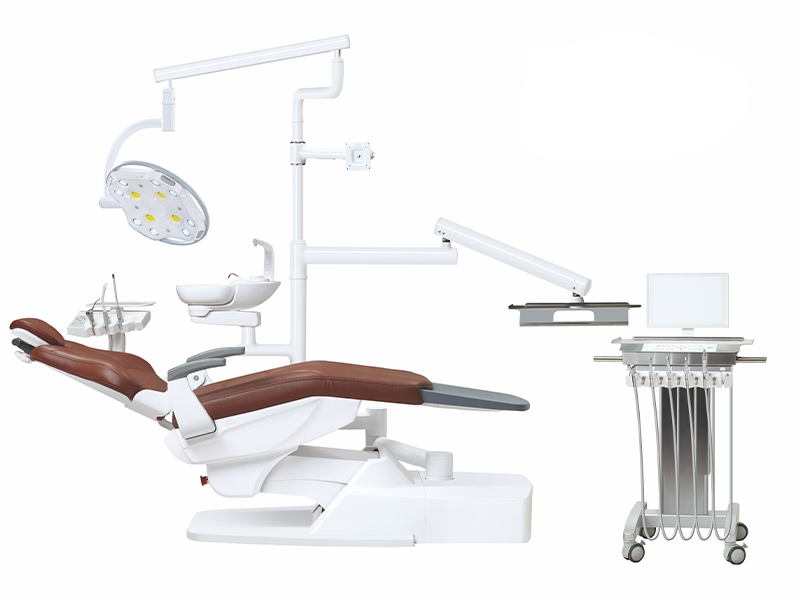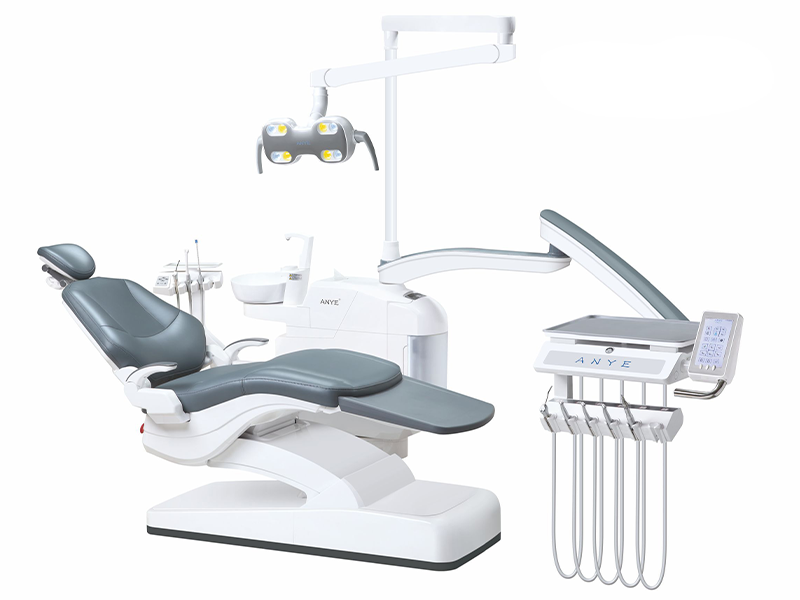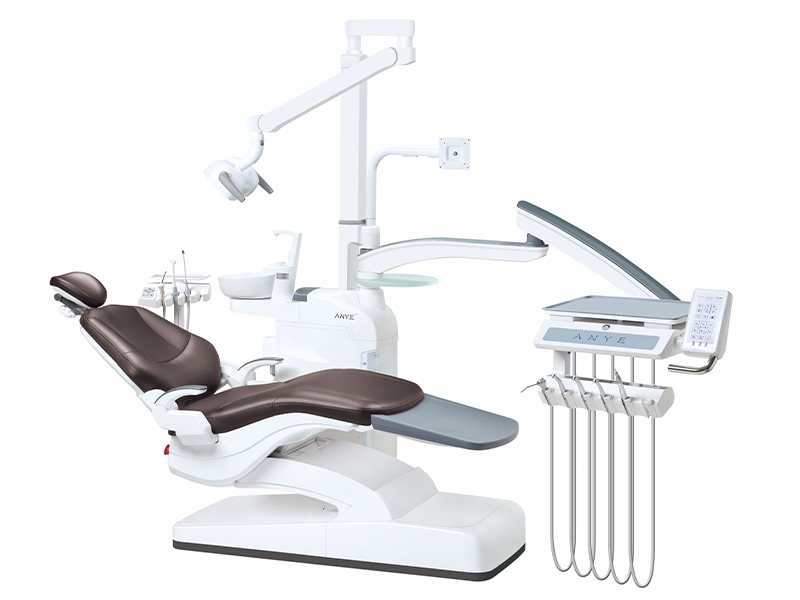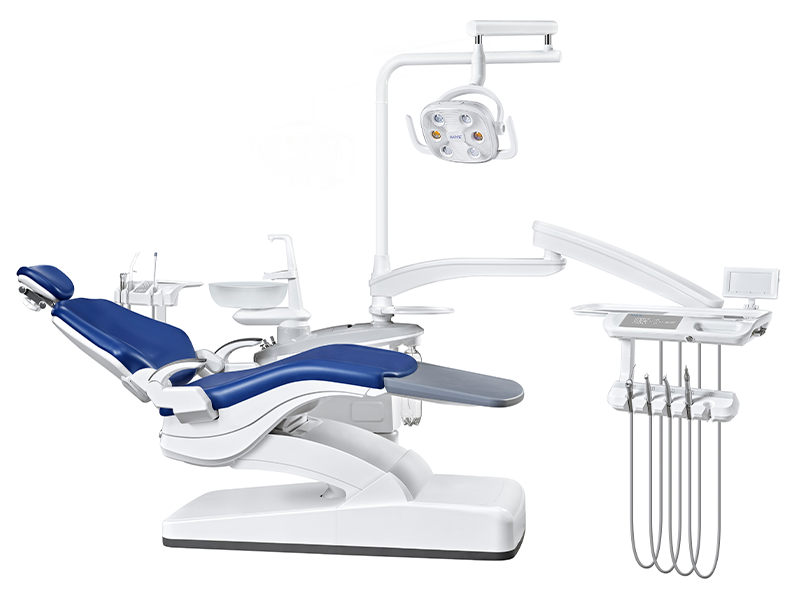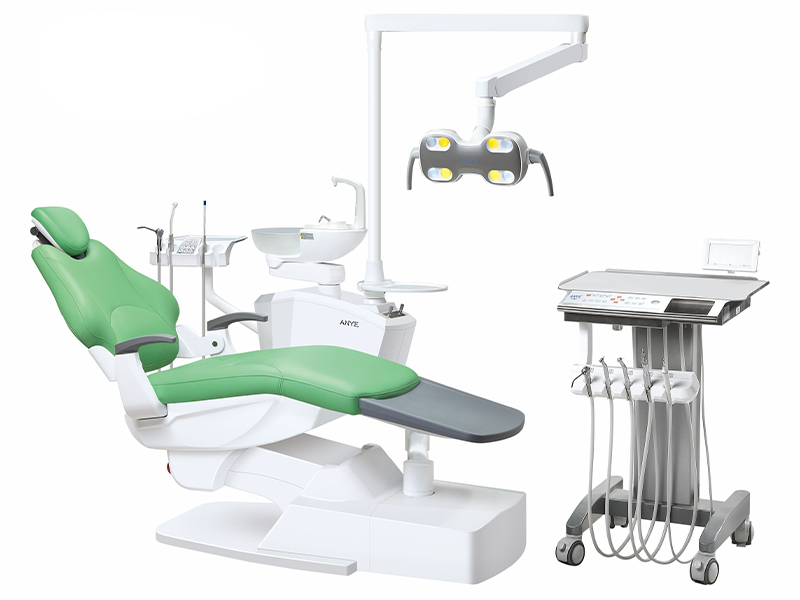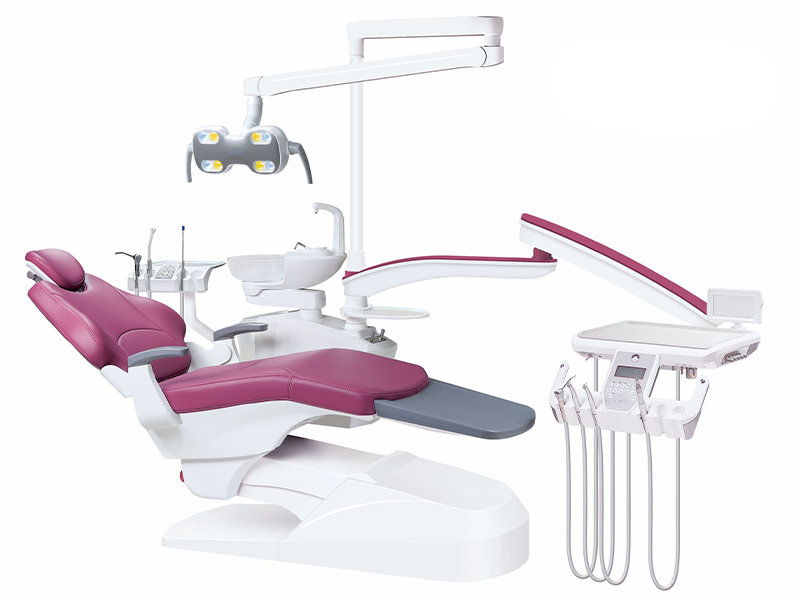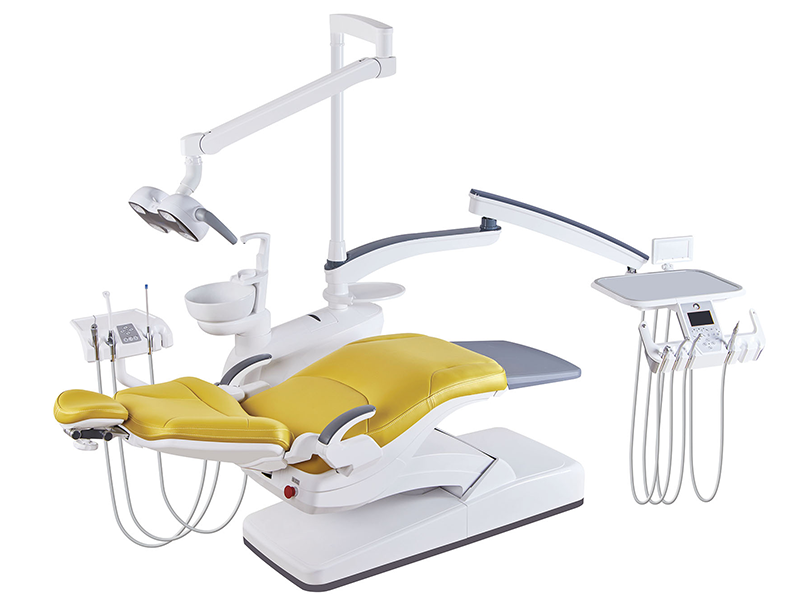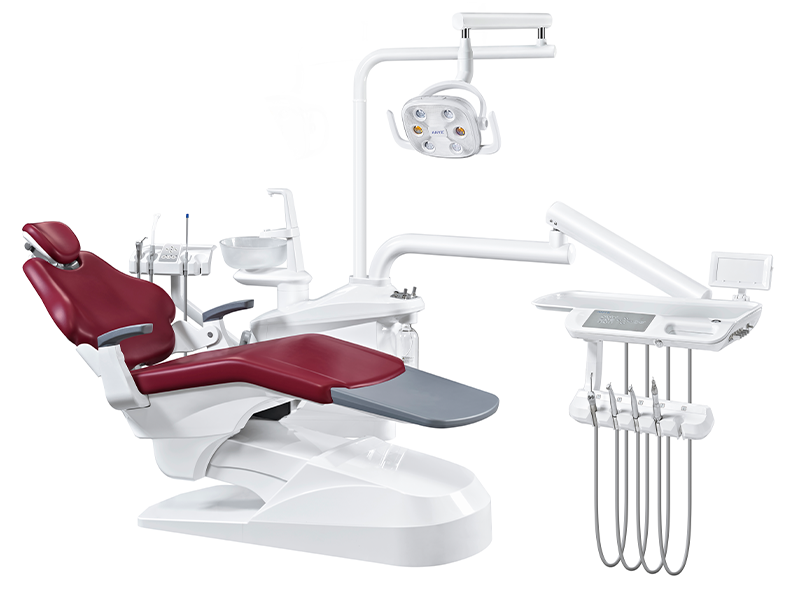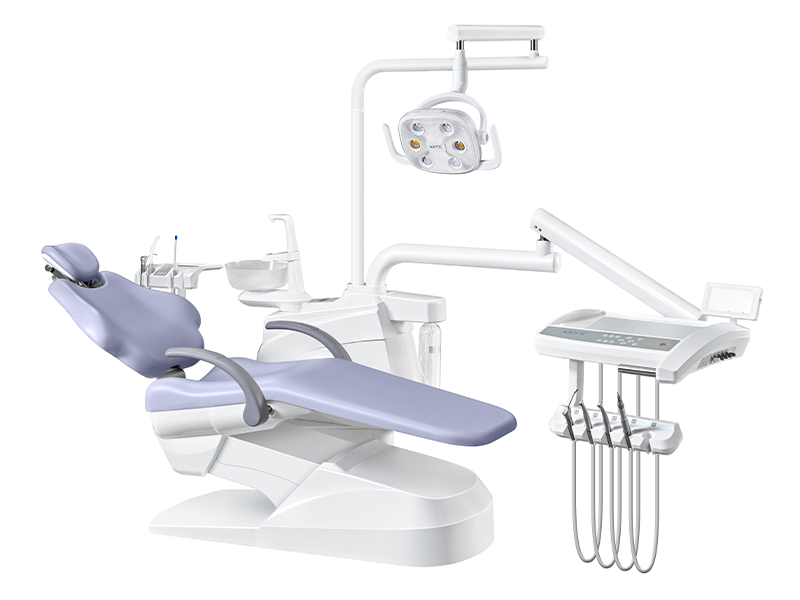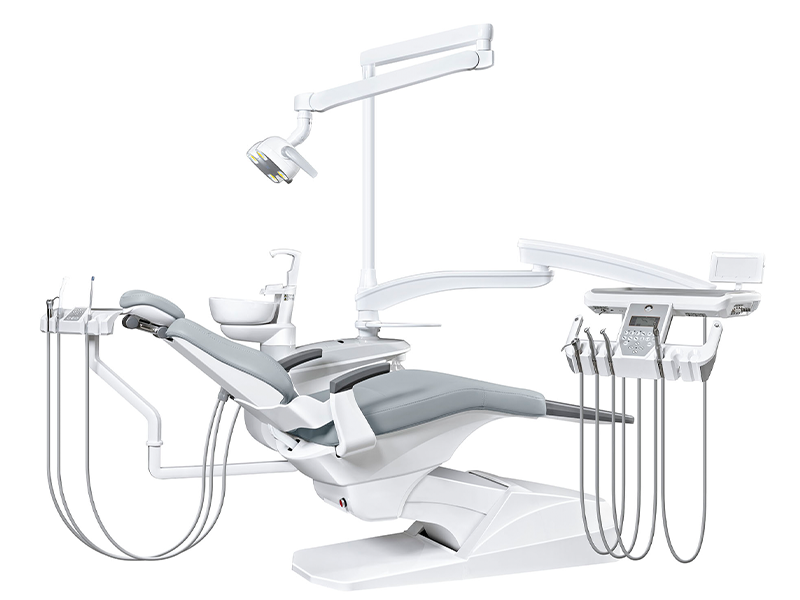The dental industry is on the cusp of a technological revolution. Emerging technologies like artificial intelligence (AI), robotics, the Internet of Things (IoT), and virtual reality (VR) are poised to transform the way dental care is delivered, and at the heart of this transformation is the dental chair.
No longer just a place for patients to sit, modern dental chairs are evolving into sophisticated, connected hubs that enhance patient comfort, streamline workflows, and empower dentists with unprecedented precision and control. As these advancements accelerate, it's crucial for dental chair suppliers to understand these emerging trends and adapt their strategies to meet the evolving demands of the dental profession in 2025 and beyond.
Understanding the Current Landscape of Dental Chair Technology
To effectively navigate the future, it's essential to first grasp the present. Today's dental chairs are already a far cry from their manual predecessors. They are available in a variety of configurations, from basic examination chairs to high-tech units designed for specialized procedures.
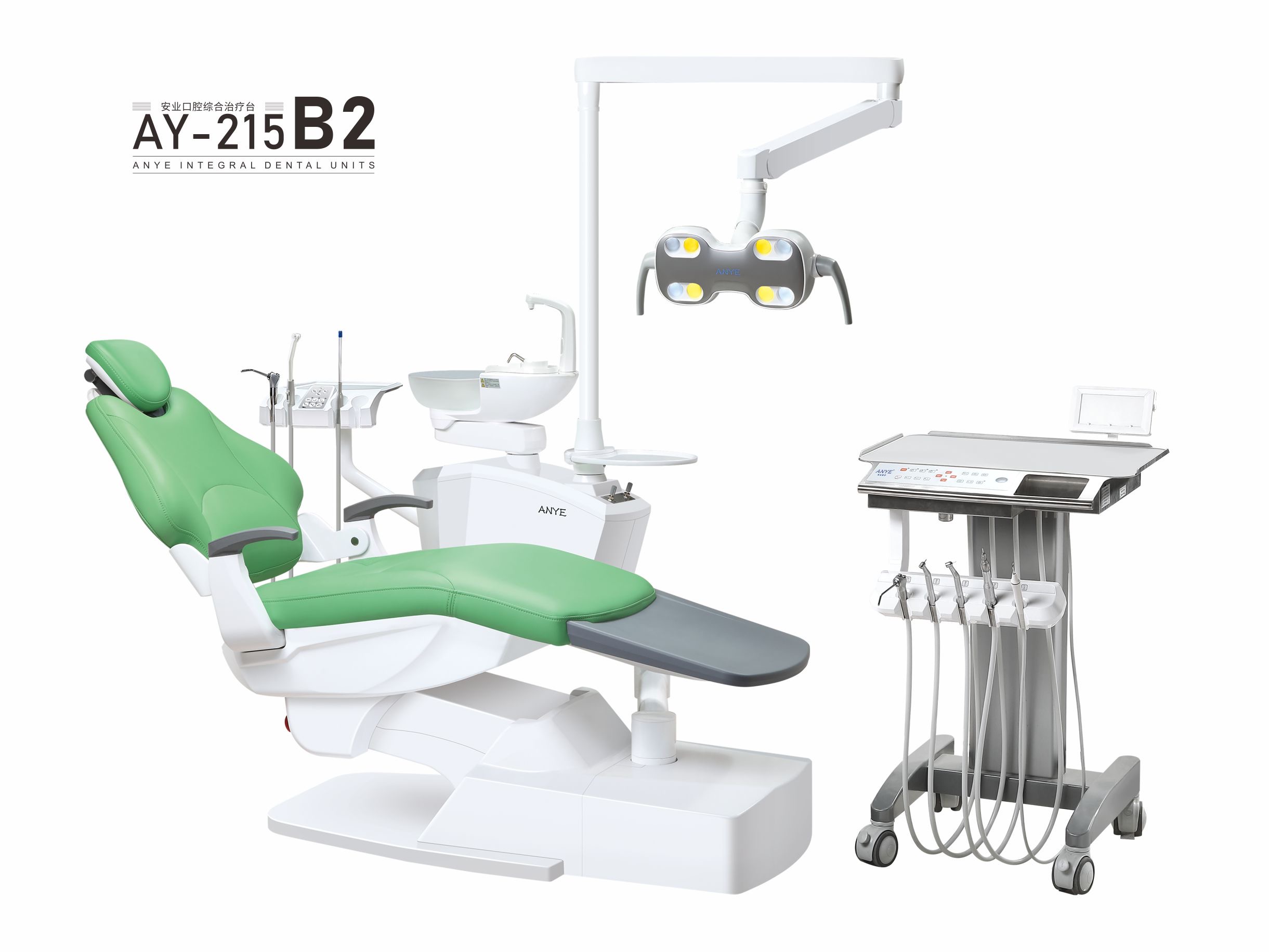
Types of Dental Chairs
- General Dentistry Chairs: These are the most common type and are used for a wide range of routine procedures such as cleanings, fillings, and extractions. They typically feature adjustable height, backrest, and headrest, along with basic instrument delivery systems.
- Surgical Chairs: These chairs are designed for more complex procedures, such as oral surgery or implant placement. They offer a wider range of motion, enhanced stability, and often include features like integrated surgical lights and suction systems.
- Pediatric Chairs: These chairs are specifically designed for children, with smaller dimensions and often feature playful designs or colorful upholstery to create a more welcoming environment for young patients.
Evolution of Dental Chair Design
The journey from simple, manually operated chairs to today's sophisticated units has been marked by a series of key innovations. Early dental chairs were primarily focused on basic functionality, providing adjustability for patient positioning. The introduction of hydraulic systems marked a significant leap, enabling smoother and more precise movements. The advent of electric dental chairs further enhanced control and added features such as programmable positions and integrated foot controls.
Key Technological Advancements Shaping the Future of Dental Chairs
While current dental chairs have made significant strides, the future holds even more transformative advancements. Here's a look at the key technologies that are poised to redefine the dental chair landscape:
Artificial Intelligence (AI)
AI is already making waves in dentistry, and its integration into dental chairs is set to revolutionize diagnosis, treatment planning, and procedure execution.
- AI-Assisted Diagnostics: AI algorithms can analyze radiographic images and patient data to assist dentists in identifying potential issues, improving accuracy and early detection.
- Smart Treatment Planning: AI can create personalized treatment plans based on individual patient data, considering factors like oral health history, medical conditions, and desired outcomes.
- Robotics in Dentistry: Robotic arms integrated into dental chairs are already being used for tasks like precise implant placement and complex surgical procedures. AI can further enhance these systems by enabling real-time adjustments based on patient anatomy and procedure dynamics.
- Voice Control: Imagine a dental chair that responds to voice commands, allowing dentists to adjust settings, access patient information, or control instruments hands-free. This level of integration not only enhances efficiency but also improves hygiene by reducing the need to touch surfaces.
Internet of Things (IoT)
IoT connectivity is transforming dental chairs into data-rich hubs, opening up new possibilities for monitoring, maintenance, and patient care.
- Real-Time Data Collection: Sensors embedded in dental chairs can collect a wide range of data, including patient vitals, chair positioning, instrument usage, and material consumption. This data can be used to optimize workflows, track performance metrics, and identify areas for improvement.
- Predictive Maintenance: IoT sensors can monitor the health and performance of dental chair components, alerting suppliers and technicians to potential issues before they become major problems. This proactive approach can reduce downtime, minimize repair costs, and ensure optimal chair functionality.
- Remote Monitoring and Support: IoT connectivity enables remote monitoring and troubleshooting of dental chairs, allowing suppliers to provide real-time support to dental practices, improving customer satisfaction and reducing service call costs.
Virtual Reality (VR)
VR is emerging as a powerful tool for patient education, anxiety reduction, and even procedure simulation in dentistry.
- Immersive Patient Education: VR applications can provide patients with interactive, three-dimensional visualizations of their oral health, proposed treatments, and expected outcomes. This can help patients better understand their conditions and make more informed decisions about their care.
- Anxiety Reduction: VR can create immersive, calming environments that distract patients from the dental experience, reducing anxiety and improving comfort levels. Imagine a patient wearing a VR headset and being transported to a serene beach while undergoing a procedure.
- Procedure Simulation: VR can be used to simulate dental procedures, allowing dentists to practice complex techniques in a risk-free virtual environment. This can enhance skill development, improve precision, and potentially lead to better patient outcomes.
3D Printing
The use of 3D printing is expanding in dentistry, with applications ranging from custom-made dental prosthetics to surgical guides. This technology has the potential to streamline production processes, reduce costs, and improve customization for dental chair suppliers.
- On-Demand Manufacturing: 3D printing allows dental chair suppliers to manufacture components on demand, reducing the need for large inventories and shortening lead times. This can improve responsiveness to customer needs and reduce waste.
- Personalized Components: 3D printing enables the creation of custom-designed components tailored to specific patient needs. This could include things like adjustable headrests, armrests, or instrument trays that are ergonomically optimized for individual dentists.
- Prototyping and Innovation: 3D printing facilitates rapid prototyping and testing of new designs, allowing suppliers to innovate more quickly and bring new products to market faster.
Advanced Materials
The materials used in dental chair construction are also evolving, with a focus on enhanced durability, hygiene, and comfort.
- Antimicrobial Surfaces: New materials with antimicrobial properties are being incorporated into dental chairs to inhibit the growth of bacteria and other microorganisms, improving infection control and patient safety.
- Lightweight and Durable Materials: Advanced composites and alloys are being used to create dental chairs that are both lightweight and incredibly durable. This can make chairs easier to maneuver and position, while also extending their lifespan.
- Biocompatible Materials: The use of biocompatible materials in dental chairs is becoming increasingly important, especially for patients with allergies or sensitivities. These materials are designed to minimize the risk of adverse reactions and ensure patient comfort.
Implications for Dental Chair Suppliers
The rapid pace of technological advancement presents both opportunities and challenges for dental chair suppliers. To remain competitive and meet the evolving needs of the dental profession, suppliers need to:
Embrace Innovation and Collaboration
- Invest in R&D: Dedicated research and development efforts are crucial to stay ahead of the curve and develop dental chairs that incorporate cutting-edge technologies.
- Partner with Tech Companies: Strategic partnerships with technology companies specializing in AI, robotics, IoT, and other relevant fields can accelerate innovation and bring new products to market faster.
- Engage with Dental Professionals: Regularly seek feedback from dentists to understand their evolving needs, pain points, and desired features in dental chairs. This will ensure that new products are aligned with market demand.
Adapt Production Processes
- Embrace Automation: Integrating automation and robotics into manufacturing processes can improve efficiency, reduce costs, and enable the production of more sophisticated and customized dental chairs.
- Explore 3D Printing: Leveraging 3D printing for on-demand manufacturing and personalized components can create a competitive advantage and improve responsiveness to customer needs.
- Source Sustainable Materials: Incorporate eco-friendly materials and manufacturing practices to meet the growing demand for sustainable products and appeal to environmentally conscious dental practices.
Develop New Business Models
- Offer Subscription Services: Consider offering subscription-based models for dental chairs that include software updates, maintenance, and support, providing recurring revenue and strengthening customer relationships.
- Provide Data Analytics: Utilize data collected from IoT-connected dental chairs to provide valuable insights to dental practices, helping them optimize workflows, track performance, and improve patient care.
- Invest in Training and Support: Develop comprehensive training programs for dental professionals to ensure they can effectively use and maintain technologically advanced dental chairs. Offer remote support options to address issues quickly and minimize downtime.
Cybersecurity Considerations
As dental chairs become more connected and data-driven, cybersecurity is paramount. Suppliers must prioritize:
- Data Encryption and Secure Storage: Implement robust data encryption protocols to protect patient information and ensure compliance with HIPAA and other relevant regulations.
- Regular Software Updates and Patches: Regularly update software and firmware to address security vulnerabilities and protect against cyberattacks.
- Educate Dental Practices on Cybersecurity Best Practices: Provide training and resources to dental practices on how to secure their networks, protect patient data, and prevent unauthorized access to dental chair systems.
Meeting the Evolving Needs of the Dental Profession
Emerging technologies are not only reshaping dental chairs but also transforming the way dentistry is practiced. Dental chair suppliers have a vital role to play in meeting the evolving needs of dental professionals in several key areas:
Enhanced Patient Experience
- Comfort and Ergonomics: Develop dental chairs with advanced ergonomic features, adjustable support systems, and comfortable upholstery to enhance patient comfort and reduce anxiety.
- Personalized Care: Incorporate features that allow for customization and personalization, catering to individual patient needs and preferences.
- Entertainment and Distraction: Integrate multimedia systems, VR applications, or other entertainment options to distract patients during procedures and create a more positive experience.
Improved Efficiency and Productivity
- Streamlined Workflows: Design dental chairs with intuitive controls, ergonomic instrument placement, and seamless integration with other dental equipment to optimize workflows and reduce procedure time.
- AI-Assisted Tasks: Incorporate AI features that automate routine tasks, assist with diagnosis and treatment planning, and enhance precision during procedures, freeing up dentists to focus on more complex aspects of patient care.
- Data Analytics and Insights: Utilize data collected from IoT-connected chairs to provide valuable insights to dentists, helping them track performance, identify areas for improvement, and make data-driven decisions.
Enhanced Infection Control
- Antimicrobial Surfaces: Incorporate materials with antimicrobial properties into dental chair construction to inhibit the growth of microorganisms and improve hygiene.
- Automated Cleaning and Disinfection Systems: Develop dental chairs with integrated cleaning systems that automate disinfection protocols, reducing the risk of cross-contamination and ensuring patient safety.
- Easy-to-Clean Designs: Prioritize designs with smooth surfaces, minimal crevices, and removable components that are easy to clean and sterilize.
Market Analysis and Future Trends
The global dental chair market is experiencing robust growth, driven by factors such as:
- Rising Demand for Dental Care: Globally, the demand for dental services is increasing due to factors such as population growth, aging demographics, and rising awareness of oral health.
- Technological Advancements: The continuous development of new technologies and features in dental chairs is attracting dental practices looking to enhance patient care, improve efficiency, and stay competitive.
- Government Initiatives: Government initiatives in many countries are focused on improving access to quality dental care, leading to investments in new dental equipment and infrastructure.
Key market trends include:
- Increasing Adoption of Digital Dentistry: Dental practices are rapidly adopting digital technologies, including intraoral scanners, digital radiography, and CAD/CAM systems. Dental chairs that seamlessly integrate with these technologies are in high demand.
- Growing Focus on Ergonomics and Patient Comfort: Dental practices are prioritizing patient comfort and ergonomic design in their equipment choices. Dental chairs that offer advanced adjustability, comfortable upholstery, and features like massage or heating are gaining popularity.
- Rising Demand for Portable and Mobile Units: The demand for portable dental units is increasing, driven by the need to provide dental care in remote areas, nursing homes, or other non-traditional settings.
Emerging Markets for Dental Chair Technology
Emerging markets, particularly in Asia-Pacific and Latin America, are witnessing significant growth in the dental chair market. Factors contributing to this growth include:
- Rapid Economic Development: Rising disposable incomes and healthcare spending in these regions are driving demand for high-quality dental care.
- Increasing Awareness of Oral Health: Government initiatives and public awareness campaigns are promoting better oral hygiene practices, leading to increased demand for dental services.
- Expanding Dental Tourism: Many countries are becoming popular destinations for dental tourism, attracting patients from developed countries seeking affordable and high-quality dental care.
Regulatory Landscape and Compliance
Dental chair suppliers need to stay informed about the regulatory landscape and ensure their products comply with relevant standards and regulations.
- FDA Approvals: In the United States, dental chairs and related equipment must obtain FDA (Food and Drug Administration) approval before they can be marketed and sold.
- ISO Standards: International Organization for Standardization (ISO) sets global standards for medical devices, including dental chairs. Suppliers should ensure their products meet these standards to demonstrate quality and safety.
- Other Regional Regulations: Various countries and regions have specific regulations governing medical devices. Suppliers need to research and comply with these regulations in the markets where they operate.
Conclusion
The future of dental chairs is intelligent, connected, and patient-centric. As emerging technologies continue to reshape the dental industry, dental chair suppliers have a critical role to play in driving innovation, meeting the evolving needs of dental professionals, and shaping the future of oral healthcare.
Ready to take your dental chair offerings to the next level? Download our comprehensive guide, "The Dental Supplier's Guide to Emerging Technologies," for actionable strategies and insights to succeed in 2025 and beyond.

